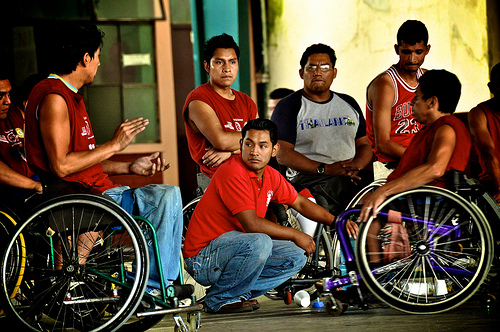


The U.S. Department of Education Office for Civil Rights (OCR) issued new guidelines last Friday for inclusion of students with disabilities into extracurricular athletic programs. Some are saying this move is as significant an opportunity for these individuals as Title IX was for females.
Michelle Diament’s article for Disability Scoop provides a clear summary of the 13-page letter from OCR assistant secretary Seth Galanter, clarifying Section 504 of the Rehabilitation Act. Galanter said Government Accountability Office has recommended the communication after its investigation determined that “students with disabilities were not being afforded an equal opportunity to participate in extracurricular athletics in public elementary and secondary schools.” Diament’s article also included a quote from Education Secretary Arne Duncan that succinctly states how this opportunities helps make life matter more for young people with disabilities:
Sports can provide invaluable lessons in discipline, selflessness, passion and courage, and this guidance will help schools ensure that students with disabilities have an equal opportunity to benefit from the life lessons they can learn on the playing field or on the court.
Similar reasons were used 40 years ago when defending the adoption of the Title IX amendment, which mandated gender equity for every education program receiving federal funding. Athletic programs have been one of the primary beneficiaries of the decision, resulting in a higher profile for female athletes along the American landscape, and changing perceptions about what women in general can accomplish when given fair opportunity.
But these new guidelines are not on quite the same landmark level as Title IX, says Penn State instructor and StateCollege.com blogger Patty Kleban. Nor should the decision raise red flags for those who argue against government-sanctioned affirmative action measures, since the guidelines say eligibility for participation in any given activity by an individual with a disability must not change “the inherent characteristics of the activity.”
The benefits, writes Kleban, will be a more meaningful level inclusion for young people with disabilities. As inspiring as stories about someone with a disability getting the chance to play on a school team are in this day and age of viral media, the contrivance with which these moments sometimes take place often don’t accomplish anything more than a publicity opportunity.
The model at Penn State brings “reasonable accommodation” to the colleges intramural and special recreation programs levels very effectively. Kleban writes:
Former PSU women’s track coach, Teri Jordan, under the umbrella of the PSU athletics, offers a variety of learning and training opportunities for both Penn State students with disabilities and for others in our community through Ability Athletics. Track. Swimming. Weight-lifting. Although some of her athletes compete on the international field, others are just weekly warriors. Each Wednesday throughout the semester, you can jump in on a pretty competitive wheelchair basketball game with sometimes as many students rolling around in chairs who don’t have disabilities as those who do. Everyone there wants to play, to have fun and to get some exercise. It’s a win all around.
Share your thoughts on the inclusion of students with disabilities in athletic programs in the comments section below.
Image by mesaba (Mario Bollini).